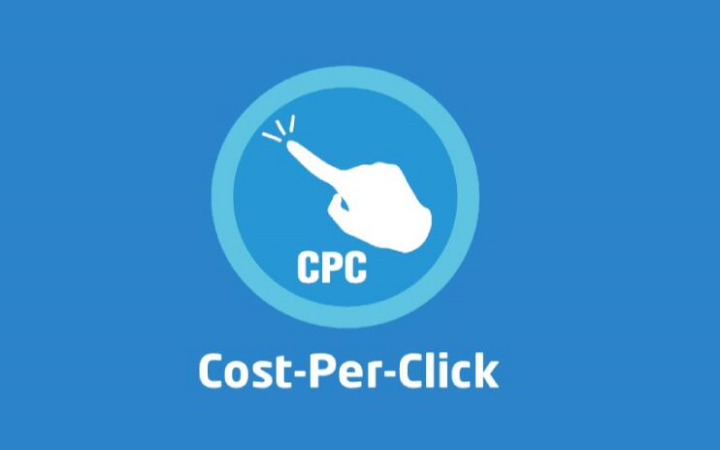To succeed in the digital arena that dominates the daily life of consumers today, one has to adopt the most effective styles of advertising on the market in this regard to beat the competition. One of such strategies is Dynamic Search Ads (DSAs). While they are a new way of presenting on the Internet, DSAs are capable of prompting consumers to make a purchase decision, making it beneficial to both businesses that are small and digital marketers who target the audience without going through the trouble of doing exhaustive keyword research.
This manual is intended to orient newcomers to Dynamic Search Ads by grounding them in their importance, the circumstances for exploiting them, how they differentiate themselves from regular campaigns, and how to employ them to their best advantage. It’s time to begin.

Why Dynamic Search Ads Are Important
Dynamic Search Ads give a fresh perspective on how you can utilize the web to reach your potential clients. They do this by creating ads that are relevant to the content on your website. Unlike typical search ads that need to be built on specific sets of keywords, the DSAs exploit Google’s crawling technology to match user queries with the most relevant website pages. This ensures that your site pages are directly displayed, and thus, users can easily find the exact information they are looking for.
Main Benefits of DSAs:
- Higher Potential than Other Search Ad Types: The technology of DSAs can bring you clients that you would have lost if you had only been relying on the conventional keyword-based approach.
- Speed and Accuracy: Let Google match your site’s content with relevant search queries, allowing you to concentrate on other important matters.
- Immediate Updates: These ads will automatically show the latest content from your website, assuring customers of its correctness and relevance.
When Would It Make Sense to Use Dynamic Search Ads?
DSAs are particularly useful in several scenarios:
- Big Sites: When your website lists many products or services, DSAs can be a good option to target all visitors without creating detailed keywords.
- Dynamic Content: Websites with frequent updates can benefit from DSAs since they will keep your ads up to date even without hand-operated updating.
- Contribute to Existing Campaigns: DSAs help receive additional traffic and introduce new keywords that can be included in conventional campaigns later.
How are DSA Campaigns Different from traditional Campaigns?
Traditional Campaigns:
Word-based ads trigger predefined keywords automatically.
- Static: When the utmost effort is made to address the situation, but the problem persists because it is impossible to stop any process.
- Manual setup: Utilizes both on-page and off-page techniques to structure keywords, domain names, and links while maintaining flow and budget.
Dynamic Search Ad Campaigns:
- Content-Based: The ads are dynamically produced by their website’s content.
- Automatic Updates: Provides the most recent information on your website.
- Hands-Free Management: Just the minimum manual intervention is necessary so the user can address the strategic tasks.
Pros and Cons of DSA Campaigns
Pros:
- More Outreach: Gain more customers from unexpected and less common requests.
- Time-efficient: No need to spend time researching and managing keywords as the tool is used advantageously.
- Targeted Ads: Dynamic text and initial pages are generated on the fly, so landing pages and headlines are engaging and provide a rich user experience.
Cons:
- Unwanted Variation: It provides the flexibility to choose only selected search requests that can work well with the advertisement.
- Probability of Irrelevance in Matches: Sometimes DSAs connect to the wrong searches, requiring you to search for more comprehensive queries.
- Feedback from a Qualitative Site: DSAs are highly efficient if the content of your website has good quality and is designed to be SEO-friendly.
How to Set Up Dynamic Search Ads
While the way DSAs are set up is simple, always remember that taking care of the smallest details will optimize the ads’ performance.
Step 1: Choose a Campaign Type
The first step in configuring Dynamic Search Ads is to select the appropriate ad types within the Google ADS account.
- Sign in to the ad manager.
- Click on “The campaign selection” in the left navigation bar.
- In the top location of the new account, you have the option to add “Create a New Campaign.”
- You will have to choose your advertising campaign objective, for example, sales, leads, and website traffic.
- Specify “Search” the campaign type you will want to work with.
It is important to choose the correct campaign goal, which determines the priority of your ads in conversion, page visits, or rankings.
Step 2: Set Your Targeting Options
A great way to target an advertisement can be by defining the specifications. For DSAs, the possibility to target is given in the following ways:
- All Web Pages: This is a flexible option that allows Google to choose any page on your website and show the ads.
- Specific Categories: Google can select the categories or sections on your website on which it wants to focus.
- Page Feeds: An upload of the feed with the URLs you would like to target.
It is very important to pick the correct targeting option that fits your campaign goals and business strategy most.
Step 3: Create Ad Groups
The ad groups should then be formed on your system. Traditional ad groups slightly differ from dynamic search ad groups. They are identifying the best target to connect the visits with website content.
How to Create Ad Groups:
- Start by clicking on “Add new ad group.”
- In the “Ad group type” list, select “Dynamic.”
- Give an appropriate name to your ad group.
- Decide on the pages you want to aim for. You may choose to target the categories, URLs, or every website page of your site.
Best Practice:
- Organization: Each ad group lists products or services based on the store’s themes or categories to simplify and validate your ad campaigns.
Step 4: Write Ad Copy
Even if Dynamic Search Ads have dynamically generated headlines, the description has to be compelling. Make your ad copy simple, clear, and concise, merging well with the dynamically created headlines.
Tips for Writing Ad Copy:
Highlight Unique Selling Points: Bring out the most unique aspect of your product or service as opposed to the other similar ones.
- Call to Action: Create a very strong and powerful CTA to stimulate users’ decision-making process, such as “Learn More.”
- Relevance: Make sure that the ad copy is in line with the content of the landing page.
Best Practice:
- A/B Testing: Always carry out different versions of ad copy testing, see which one does the best, and stick with it.
Step 5: Set Bids and Budget
Budget and bidding will play a big role in the success of your business and the conversion of your investment (ROI). Bidding strategy: They have to decide the settings to run the campaign, such as manual CPC and automatic bid, and set a date by which the daily budget will be finished.
Best Practice:
- Flexible Bidding: You could begin with the lowest bid level and then change it depending on the performance data.
- ROI Monitoring: Be sure to frequently check your spending and adjust your budget accordingly for the best ROI.
Step 6: Launch Your Campaign
Before going live, check your settings and ad groups to ensure they are set up correctly. If you are happy with them, click the “Save and Continue” button to give your campaign the green light.
Post-Launch Best Practices:
- Performance Monitoring: Regularly monitor the job of your campaign and measure all the necessary data through Google Ads reports. Assess the performance indicators such as click-through rate, conversion rate, and return on ad spend.
- Refinement: Use the information from the data to polish your positioning and advertising copy and strategize your bidding.
How to Leverage DSA Campaigns Effectively
Utilize Negative Keywords
DSAs can bring much more traffic to your site; however, using them differently may attract irrelevant traffic. Therefore, the application of negative keywords is enforced. They are the terms for which advertisers do not want their ads to be displayed. Regular updates to your negative keyword list are to be made to make a robust target and improve ad relevance.
Optimize your Website Content
Optimize your Website Content
Content is like your website’s master touch to making your DSA campaigns a success. Hence, the first thing you should do is make sure that all your product or service pages are SEO articulated with good, keyword-dense, and descriptive content. This helps Google realize which is which for each page and allows it to then direct users’ search queries to the most proper landing page.
Use Negative Dynamic Ad Targets
Negative dynamic ad targets let you avoid these particular pages when using your DSA campaign. For example, you should exclude the pages of the products that were out of stock or low-performance landing pages. Resulting in only your ads using the best content, this technique enhances the overall performance of the campaign.
Use Relevant Call-to-Actions
Your DSA campaigns can perform much better if you learn to use CTAs. CTAs need to be clear and attractive and reflect the user’s search intent. Simple catchphrases like “Shop Now” might motivate your audience to take action and increase conversions.
Regularly Monitor Performance
Regular monitoring and analysis of your DSA campaigns are fundamental steps to their success. Generate reports through Google Ads and other tools to track metrics like the click-through rate, conversion rate, and CPC. It is important to catch trends and take action based on real data to enhance these campaigns.
Analyzing the Performance of Dynamic Search Ads
Analyzing the performance of your DSA is the main task for the success of the whole campaign.
Key Metrics to Monitor:
- CTR: Shows how well the ad is attracting the click.
- Conversion Rate: Tells you how many of the total clicks turn into conversions.
- Cost Per Conversion: Tells you how effective your spending is.
- Search Terms Report: This tool is focused on URL parameters that online marketers usually use in studies. However, it can also be used as a powerful weapon for a hacker when forming a URL.
Tools for Analysis:
- Google Analytics: Use non-intrusive surveillance technologies by analyzing data such as browser and cookie settings to optimize the user experience of the website.
- Google Ads Reports: Use built-in reporting tools to evaluate key performance indicators (KPIs).
FAQs
How do DSAs differ from traditional PPC campaigns?
As the name suggests, Google’s dynamic search ads create advertorials and keywords on the fly, which means that none of the content or keywords are pre-developed. Traditional PPC campaigns, on the other hand, are created using manually inserted keywords and ads.
Can I use Dynamic Search Ads with other ad formats?
Yes, DSAs are cross-compatible with other ad formats, such as text ads and display ads. Utilizing a mix of various types of online advertising is a unique approach, and the most important thing is that you will soon be reaching your target audience.
Are Dynamic Search Ads suitable for all businesses?
DSAs can work for numerous businesses, albeit websites with many products, constant content updates, or few research materials, where most of the benefits are seen. However, it would help if you were clear about your needs and goals. Therefore, take the time to decide whether DSAs are the right option for your case.
Final Thoughts
Dynamic Search Ads are a potent tool that is very beneficial for both marketers and small business owners who are willing to devote their time to reaching out and keeping their ads adequate. Using Google’s more advanced tools, DSAs deliver a no-hand approach to fetching user intent and bringing traffic to your website.
Are you prepared to dominate the advertising world?


